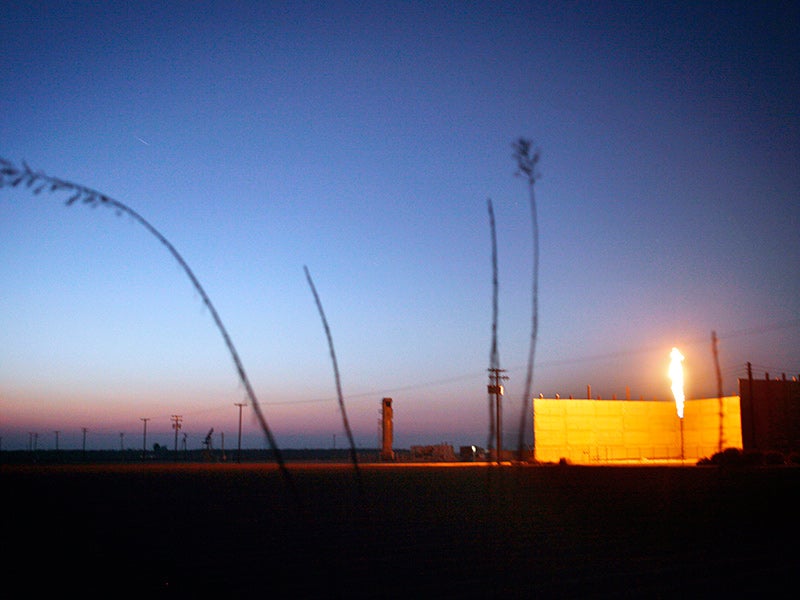May 2, 2024
How the Biden Administration Can Keep Building on Historic Environmental Protections
With more than a dozen major environmental rules recently finalized, here’s what the administration should do as soon as possible to secure a lasting impact.

On top of securing the largest climate spending package ever, the Biden administration has made big strides in protecting public health and our planet through executive agency rulemakings. In just the past few months, it has finalized over a dozen major environmental protections. Public advocacy — including more than 347,000 comments from Earthjustice supporters — has played a key role in spurring the administration to act quickly and boldly.
During Earth Week, the Biden administration announced four new standards that will rein in power plant pollution and help the U.S. meet our climate and environmental justice commitments:
- The first-ever limits on how much carbon pollution U.S. coal plants and new gas plants can emit
- Stricter limits on mercury and other toxic emissions from oil and coal plants
- A requirement that coal plants clean up hundreds of toxic coal ash dumps across the country that have been leaking toxic pollution into groundwater
- Standards for coal plants that reduce how much toxic wastewater containing arsenic, mercury, and other pollutants they can dump into waterways
These rules will bring much-needed improvements to public health. The mercury emissions rule strengthens a regulation that has already been shown to avert 11,000 premature deaths a year. As for the new coal plant regulations, the U.S. Environmental Protection Agency has calculated they will prevent over half a billion pounds of pollutants from being discharged into U.S. waterways each year. The agency estimates that 42 million people currently rely on drinking water sources likely contaminated with wastewater from coal plants.
Public health benefits are also a theme in many of the other environmental rules the Biden administration has adopted in recent months, from establishing the first-ever standards for toxic PFAS in drinking water to increasing protections for the nearly 180 million people who live in high-risk zones for chemical disasters at industrial facilities.
And many of the rules take steps to mitigate the climate crisis, from increasing the rate that fossil fuel companies must pay to drill on public lands to implementing stronger standards for methane pollution from the oil and gas industry to reducing tailpipe emissions from cars and trucks to restoring the nation’s foundational environmental law, the National Environmental Policy Act, bringing clarity to clean energy project sponsors and strengthening community engagement.
In total, these rules advance an ambitious vision for solving the most pressing environmental problems of our time.
Building on this historic progress, the Biden administration must urgently finalize specific proposed environmental rules and health safeguards to hold industrial polluters accountable, dramatically improve air and water quality, safeguard public health, accelerate the transition to clean energy, and combat the escalating climate crisis.
Environmental Protection Agency
Banning TCE
Trichlorethylene (TCE) is used in stain removers, degreasers, and various industrial processes. It is also associated with water pollution, cancer outbreaks, and other severe harm in communities across the country.
Take Action: Tell the EPA to finalize a ban on this dangerous chemical.
Getting lead out of our pipes
Lead can cause irreversible brain damage in children and as many as 22 million people in the United States shockingly still get their water through lead pipes.
Take Action: Tell the EPA to finish a new rule requiring water systems to replace all lead pipelines within 10 years.

Letting California lead on air quality
Congress gave California the explicit right under the Clean Air Act to adopt vehicle pollution standards that are more protective than the federal government’s. The EPA just needs to grant a waiver from the federal standard, allowing California and like-minded states across the country to then adopt these higher standards.
Restoring a full chlorpyrifos ban
The EPA banned the dangerous pesticide chlorpyrifos, used on apples, cherries, peaches, and citrus and linked to autism and learning disabilities. After a lawsuit from industry, a court of appeals ordered the EPA to reconsider more than 50% of food uses.
Take Action: Tell the EPA it must reinstate the chlorpyrifos ban and respond to an Earthjustice legal petition that calls for all organophosphates to be banned.

Department of Energy
Improving energy efficiency
The Department of Energy is updating energy efficiency standards for a wide range of appliances and equipment. Stronger standards will mean huge savings for U.S. consumers and businesses and avoid major carbon emissions.
Department of Transportation
Detecting methane leaks
Pipelines crisscrossing the country leak significant amounts of methane, a potent greenhouse gas. The annual emissions tied to methane leaks have a similar climate impact in the near-term as roughly 50 million passenger cars driven for a year. The Department of Transportation has proposed regulations that would require pipeline operators to significantly improve community safety by detecting methane and repairing gas pipeline leaks.
Take Action: Tell the Department of Transportation to finalize the Advanced Leak Detection & Repair Rule to protect our climate and the safety and health of our communities.

Top Photo Credits: Cheswick coal-fired power plant in Pennsylvania (Chris Jordan-Bloch / Earthjustice). Bears hunt for salmon in the Tongass National Forest (U.S. Forest Service). Oil and gas operations near residential areas in Colorado (Chris Schneider for Earthjustice). Cars and trucks crawl along on the Cross Bronx Expressway (Getty Images). The nation's largest oil refinery, owned by Motiva and located in Port Arthur, Texas, was forced to shut down in 2017 due to flooding from Hurricane Harvey. (Alex Glostrum / Louisiana Bucket Brigade)